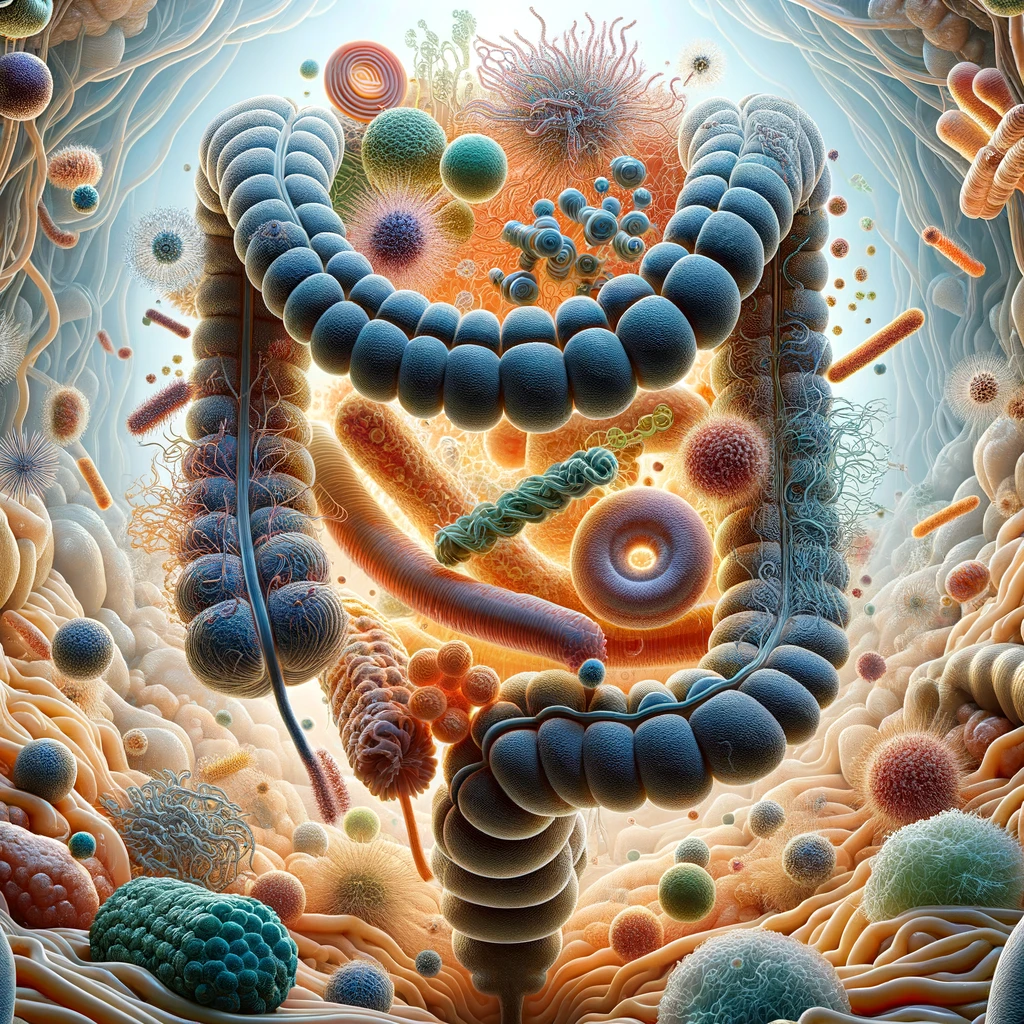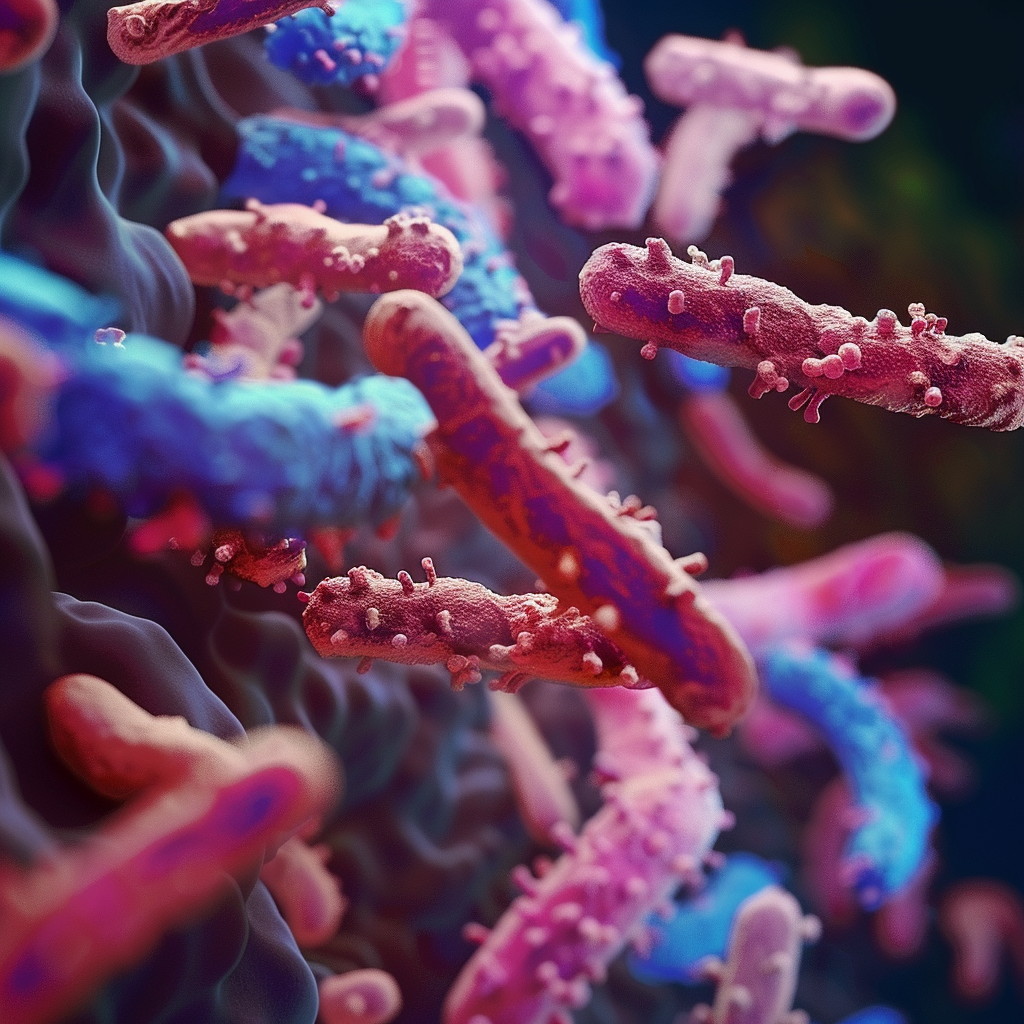The microbiome is a collection of bacteria residing primarily in our digestive tract that plays a huge role in health promotion and disease prevention. We know that diseases such as obesity [1], Crohn’s and Ulcerative Colitis [2], [3], Type 1 diabetes [4], asthma [5], eczema [6], and more are linked to an altered microbiome (a state that is commonly referred to as dysbiosis), but how can we define a healthy microbiome?
So you may think, “A microbiome associated with diseases can be considered unhealthy microbiomes” right? Well, we don’t know if the disturbances or changes in gut microbes that are associated with diseases are part of the cause or are factors contributing to the disease, or if these changes are simply effects of the disease pathway that is already ongoing [7].
“…‘healthy’ individuals may have gut microbiomes that look completely different from each other, yet all of the individuals are still “healthy”.”
A common yet unsteady ground
The studies that show links between disease and the microbiome find a common quality – the individuals with the disease being studied that differs from healthy controls. The challenge here is that the gut microbiome of healthy individuals differs [8], [9]. So, while each ‘healthy’ individual may have gut microbiomes that look completely different, all the individuals are still “healthy.” This doesn’t even mention that “healthy” can also be quite tricky to define and varies between studies!
Enterotypes – stratifying the gut microbiome
One way of generally assessing the microbiome is stratifying individuals into something call “enterotypes”. Enterotypes are generally defined as microbiome groups, with three originally identified [10], and expanded to four [11]–[14]. In reality, individuals’ microbiomes fall on spectrum or gradient rather than a defined group. This means that while an individual’s microbiome might be classified in one enterotype, they could be much closer to an individual in another enterotype than a person within their own group (below, see an example of enterotypes from one of our cohorts[15]). Overall, the enterotype or grouping-based approached has been established across multiple diseases and conditions ([11]–[13], [16]), however, it is also noteworthy that this approach is relative to the population examined. Going beyond enterotypes and using a gradient approach has been suggested to identify what qualities can be linked with health [17]. However, it’s important to note that gradient scaling of enterotypes hasn’t yet been linked to identifying “healthier” or more ideal microbiomes [18].
An example of enterotypes from our GUTINSIDE cohort [15]: individuals were classified by their gut microbiome enterotypes (different colors). Notice the overlap between groups and proximity of individuals from different groups.
Gut microbiome diversity – the more (and more evenly distributed?), the merrier
Moving to a broader measure of the gut microbiome, we know diversity, or the number and proportion of all the different microbes and related measurements, such as microbial gene richness, is generally an important marker of gut microbiome and human health [19]–[21]. It also seems the lack of diversity or depletion of microbial species could be predictive of increased disease risk [19]. What factors are associated with this depletion of diversity? Modifiable lifestyle factors, such as low levels of physical activity, reduced diet diversity, and a “western” diet high in salt and refined carbs and low in fiber are linked to low gut microbiome diversity [22]–[24].
Personalized nutrition is based on your microbiome
The conclusion here is that we still don’t know exactly what a healthy microbiome looks like from one measurement alone, and it likely a bit different for everyone [25], [26]. We all have extremely different microbial makeups, which are more individual to us than our genes [27]. One big reason for these differences is the variety of modifiable dietary, lifestyle, and environmental factors that influence the gut microbiome. The beauty of personalized nutrition is that we consider your and your microbiome’s responses to foods and lifestyle changes to identify the precise recommendations that can optimize your health.
Your microbiome is unique and personalized nutrition is adapted to your microbiome
Interested in learning more?
Check out our articles on the gut microbiome, nutrition, and health.
More about Integrative Phenomics’ science for precision and personalized nutrition
[1] Turnbaugh et al., Nature, 444, 7122, pp. 1027–1031, Dec. 2006, doi: 10.1038/nature05414.
[2] Manichanh et al., Gut, 55, 2, pp. 205–211, Feb. 2006, doi: 10.1136/gut.2005.073817.
[3] Sartor, Nat Rev Gastroenterol Hepatol, 3, 7, pp. 390–407, Jul. 2006, doi: 10.1038/ncpgasthep0528.
[4] Vatanen et al., Nature, 562, 7728, pp. 589–594, Oct. 2018, doi: 10.1038/s41586-018-0620-2.
[5] Campbell et al., Front. Allergy, 4, May 2023, doi: 10.3389/falgy.2023.1120999.
[6] Kong et al., Journal of Investigative Dermatology, 137, 3, pp. 561–568, Mar. 2017, doi: 10.1016/j.jid.2016.10.033.
[7] Fischbach, Cell, 174, 4, pp. 785–790, Aug. 2018, doi: 10.1016/j.cell.2018.07.038.
[8] Falony et al., Science, 352, 6285, pp. 560–564, Apr. 2016, doi: 10.1126/science.aad3503.
[9] Scepanovic et al., Microbiome, 7, 1, p. 130, Sep. 2019, doi: 10.1186/s40168-019-0747-x.
[10] Arumugam et al., Nature, 473, 7346, pp. 174–180, May 2011, doi: 10.1038/nature09944.
[11] Vandeputte et al., Nature, 551, 7681, pp. 507–511, Nov. 2017, doi: 10.1038/nature24460.
[12] Belda et al., Gut, 71, 12, pp. 2463–2480, Dec. 2022, doi: 10.1136/gutjnl-2021-325753.
[13] Vieira-Silva et al., Nature, 581, 7808, pp. 310–315, May 2020, doi: 10.1038/s41586-020-2269-x.
[14] Alili et al., Biomedicines, 10, 1, p. 16, Dec. 2021, doi: 10.3390/biomedicines10010016.
[15] Integrative Phenomics, clinicaltrials.gov, Clinical trial registration NCT04822948, Apr. 2021. Available: https://clinicaltrials.gov/study/NCT04822948
[16] Vieira-Silva et al., Nat Microbiol, 4, 11, pp. 1826–1831, Nov. 2019, doi: 10.1038/s41564-019-0483-9.
[17] Koren et al., PLOS Computational Biology, 9, 1, p. e1002863, Jan. 2013, doi: 10.1371/journal.pcbi.1002863.
[18] Knights et al., Cell Host Microbe, 16, 4, pp. 433–437, Oct. 2014, doi: 10.1016/j.chom.2014.09.013.
[19] Lloyd-Price et al., Genome Med, 8, 1, p. 51, Apr. 2016, doi: 10.1186/s13073-016-0307-y.
[20] Cotillard et al., Nature, 500, 7464, pp. 585–8, Aug. 2013, doi: 10.1038/nature12480.
[21] Le Chatelier et al., Nature, 500, 7464, pp. 541–546, Aug. 2013, doi: 10.1038/nature12506.
[22] Himbert et al., Am J Cancer Res, 12, 10, pp. 4789–4801, Oct. 2022.
[23] Heiman et al., Molecular Metabolism, 5, 5, pp. 317–320, May 2016, doi: 10.1016/j.molmet.2016.02.005.
[24] Fragiadakis et al., Gut Microbes, Mar. 2019, Accessed: Mar. 23, 2024. [Online]. Available: https://www.tandfonline.com/doi/abs/10.1080/19490976.2018.1494103
[25] McBurney et al., The Journal of Nutrition, 149, 11, pp. 1882–1895, Nov. 2019, doi: 10.1093/jn/nxz154.
[26] Flores et al., Genome Biology, 15, 12, p. 531, Dec. 2014, doi: 10.1186/s13059-014-0531-y.
[27] Gilbert et al., Nat Med, 24, 4, pp. 392–400, Apr. 2018, doi: 10.1038/nm.4517.


